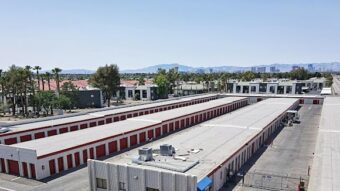Executives are still high on the commercial real estate industry. This doesn’t mean, though, that they don’t have concerns about future economic turmoil slowing commercial deals.
That’s the big takeaway from DLA Piper’s 2016 State of the Market Real Estate Survey. The survey found that 62 percent of respondents — many of whom are top commercial real estate executives — said that they are bullish on the expected performance of the commercial real estate sector for the next 12 months.
That’s a high percent. But it’s actually down from 89 percent of respondents who said the same in 2014.
Jay Epstien, co-chair of DLA Piper’s global real estate practice, said that the survey results should not be seen as a negative. On the whole, executives still expect plenty of commercial real estate deals throughout 2016, Epstien said.
“The confidence level is still pretty high,” he said. “The confidence level might be down from where it was, but real estate is still in a very good place. ‘Cautious optimism’ is the right adjective to use when describing how executives feel about commercial real estate today.”
One of the reasons for the small dip in confidence? Epstien pointed to a lower inventory of commercial real estate. He said that several large commercial assets have been taken off the market by buyers who have signed long-term leases. This means that the supply of new commercial product isn’t as high as it was even a year ago.
This also means that there aren’t as many core assets in coastal cities and first-tier cities available for purchase.
“That contributes to a lower level of confidence,” Epstien said. “But we still expect a good year in the industry and for all of the asset classes. Before last year’s survey, we were coming off a really strong five-year run. The market will still be good this year, but it won’t be as active as it was a year ago.”
For the third year in a row, survey respondents predicted that the healthcare, multifamily and industrial sectors will be the most attractive commercial asset classes for the next 12 months. Also, 71 percent of survey respondents said that they expected interest rates to rise slightly during the next 12 months. Of this group, 40 percent of respondents said that they expected cap rates to rise, too. Just 3 percent in 2014 said the same.
Epstien said that he’s not surprised that healthcare, multifamily and industrial are considered the three top asset classes. He said that industrial, for instance, has received a boost from the continued growth of e-commerce, with major online players such as Amazon constantly looking for new facilities located near big cities.
“Companies like Amazon want logistics centers in the right locations,” Epstien said. “They want well-located distribution centers. We believe that the industrial sector will continue to perform quite strongly in the coming years.”
Multifamily remains strong across the Midwest and the entire country. Is there a fear yet that developers are building too many apartment units in some particularly hot markets? Epstien said that this is a question that came up during DLA Piper’s 2016 Global Real Estate Summit held May 3. But demand remains strong for new multifamily product, Epstien said, with average rents continuing to rise in cities across the country.
“No, we don’t think the apartment sector is overbuilt yet,” Epstien said. “But some investors and developers are stepping back and taking a closer look at this sector. This is still a strong segment, but some are wondering if we are at least getting close to the point of being overbuilt in some markets.”



